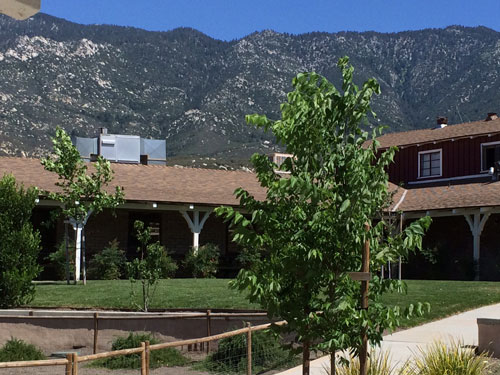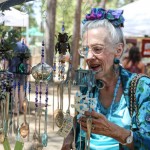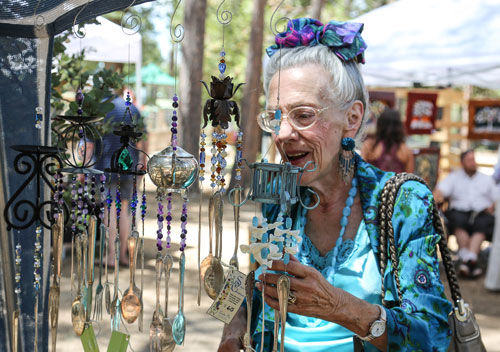
“There’s been a lot of love here, making a difference in young men’s lives,” said Twin Pines Ranch Director Jimmy Shorters. And after an extended tour of the 1,100-acre campus and interviews with personnel long associated with the ranch, it seemed many share Shorters’ feeling.

Photo courtesy Twin Pines Ranch
The first “rancher” (the name given to young men who boarded at Twin Pines) signed the ranch registration book on May 12, 1947. Thus began what would become an experiment in teaching vocational skills, academics, athletics and communal cooperation. Twin Pines quickly became a model for reforming the lives of boys who had had trouble with the law. For the next 67 years, more than 5,000 15- to 18-year-olds made their way through Twin Pines Ranch.
A December 1954 Saturday Evening Post article entitled “The Wilderness Cure for Delinquents” quotes first ranch superintendent Ralph Johnson saying they were teaching the boys “horse sense psychology.” Johnson said to one of the early arrivals, “I don’t know why you’re up here and I don’t care. You just left your past behind and you’ll be starting under new conditions. You can come and talk to me or Mrs. Johnson at any time. There aren’t any fences or guards, and if you want to walk out, nobody is going to stop you. Come to think of it, there is one rule: If you leave this ranch without permission, you can never come back.”
The ranch had minimal security. The boys remained because they chose to be there, Shorters said. And it was clear Shorters felt sadness that the good work was over, falling victim not to county budget shortages, per se, but to changes in society. He described that at the beginning boys were directed to Twin Pines for offenses such as truancy, minor scrapes with school or legal authorities and being disruptive, that today look benign by comparison.
“As society changed, more and more of the boys sent here had psychological problems, necessitating new levels of supervision and treatment, and requiring staffing of medical experts qualified to deal with these new issues,” he explained. And where once, the minimally secure nature of the campus suited the boys and the surrounding community, with more and more ranchers with psychological issues in the last years, the likelihood of boys wandering off or leaving on their own began to pose a danger to the boys and a threat to ranch stability. “As mental health issues increased, escapes became more and more of a problem,” said Shorters. And that became a source of concern to Riverside County governing authorities, the county Probation Department and Board of Supervisors. Probation Department Public Information Officer Beth Stevens said of the closing: “It’s something they [the county] had postponed as long as they could.”
Touring a campus recently emptied of the last rancher, Shorters and Stevens bragged about how much the boys had accomplished at the ranch. “The kids essentially built every building on the ranch,” said Shorters. There is a dining hall with an industrial kitchen, a bunkhouse with a recreation room and workout facility underneath, a full gymnasium with basketball court, bleachers, locker rooms and showers and a football field where Twin Pines teams became California Interscholastic Federation powers; there are vocational classrooms that taught auto mechanics, culinary skills, agriculture, construction and masonry. And these are not tumbledown buildings, but substantive, clean, well equipped and dressed with grass lawns, in which the boys installed irrigation systems and water features. It is a campus of which any school could be proud. Shorters spoke about that pride. “Kids stayed because they made the decision to stay and work on their lives,” he said. “You can see the contribution over the years — men standing on the shoulders of men who have come before. It’s something to be proud of.”
Shorters spoke of how positive role models and mentoring changed his own life. A kid in South Central Los Angeles, Shorters found a teacher and mentor in the seventh grade who helped start him down a path that led to a basketball scholarship at University of California, Riverside. “If it wasn’t for a few choices, I am them.”
“I’ll miss it here,” Shorters said. “I truly believe in treatment — teaching them, interacting with them, becoming part of their lives. For us old-timers, this place, these young men, the work done there that made such a difference for so many of them… it will always be a part of our lives.”
Ranchers were part of Idyllwild’s life as well. They marched in the Rotary International Fourth of July Parade.
Ranch Historian Lewis Schwartz was present for the interviews and had organized ranch articles, photos and record books to document the years of work and intervention in the lives of the many ranchers who had ridden, roped and rehabilitated while there. Looking at pictures of the scrubbed faces of boys from the 1950s and ’60s, smiling and so young, it is obvious how important the work was for so many and how proud Schwartz was to have been part of it. He showed a picture of ex-President Dwight David Eisenhower touring the ranch in the 60s. “It was an important moment,” said Schwartz, but not, according to him, without precedent. He and Shorters noted many state and county officials came to Twin Pines to see what the mentoring and modeling were doing to reorient the lives of boys who might otherwise have wound up in a revolving door of jails and prisons.
For Karen Bergkvist, whose father Carl Bergkvist started as a ranch employee in the 1950s, the ranch has been a part of her for most of her life. Her tears, when discussing the closing, spoke volumes. “There has been so much love here.”
Shorters said the county had not yet decided how to use the facility but options, including having it become an executive or educational retreat center, were under discussion.
Emptied of ranchers, with a light breeze whistling though a campus of well-maintained buildings, corrals and playing fields, you could almost hear the echo of voices of those who made the choice to reform and reinvent their lives.













